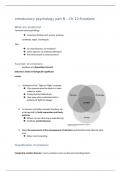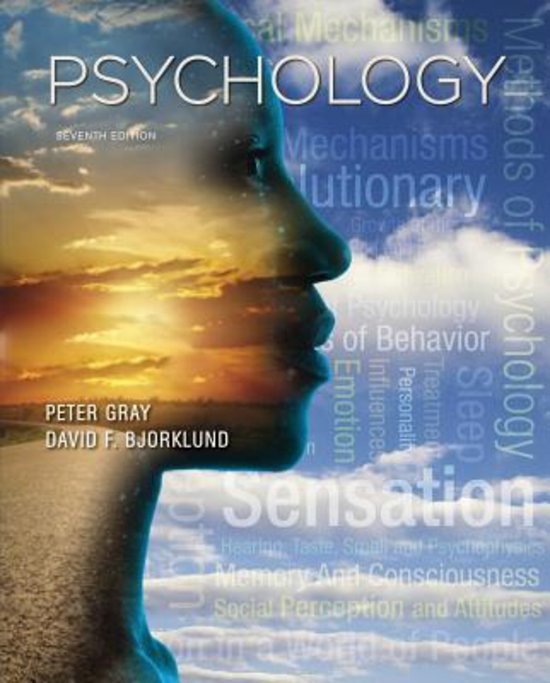Introductory psychology part B – CH 10 Emotions
What are emotions?
Common-sense psychology
Conscious feelings such as love, jealousy,
contempt, anger, and despair.
But:
no consciousness, no emotions?
Lower species, no emotions/affection?
And what exactly is consciousness?
Function of emotions
- emotions are dispositions toward
behaviour aimed at biologically significant
events
1. Activation of the “Fight-or-Flight” response
this response puts the body in a state
ready for action
Acting directly/instinctively
Run away when confronted with a
predator or fight the danger
2. In humans (and other animals) Emotions are
accompanied by facial expressions and body
postures
Others can see what one is experiencing
Facilitate social behaviour
3. Allow the assessment of the consequences of decisions and therefore help take the right
ones
Allow moral reasoning
Classification of emotions
Categorical emotion theories = Every emotion is seen as discreet and independent
, Two types:
1. Basic emotions
Congenital (aangeboren), same across cultures, evolutionary old, shared with other
species, and accompanied by very specific physiological changes and facial expressions
What, though, are the basic motions?
Usually assumed: anger, sadness, joy, fear, disgust, and surprise
some include less, some more
Note that even basic emotions are not always expressed in the same way
- Moral disgust (violation of an individual’s integrity): curled upper lip
- Physical disgust (dirty smell, taste): wrinkled nose
2. Complex emotions
Learned, shaped by the social and cultural environment, evolutionarily new, most
evident in people
Expressed by combinations of the response patterns of basic emotions
- Example: pride
More than just a facial expression (smile): shoulders back, chin up, arms raised
Research on emotions
How can you properly study complex emotions?
Often a complex and subtle mix of basic emotions.
Major cultural differences
- Pride based on personal achievements is appropriate in the West, but may be
inappropriate in the East (appropriate when the group is proud)
- In some cultures people mask emotions when watched
Example of such research
- Comparison of facial expressions of blind and sighted athletes at the 2004 Olympic and
Paralympic games
Authors' conclusion: facial expressions are innate
Dimensional emotion theories
Make a distinction between:
- Arousal
physiological/subjective intensity of the emotion
- Valence
how pleasant or unpleasant a situation is






